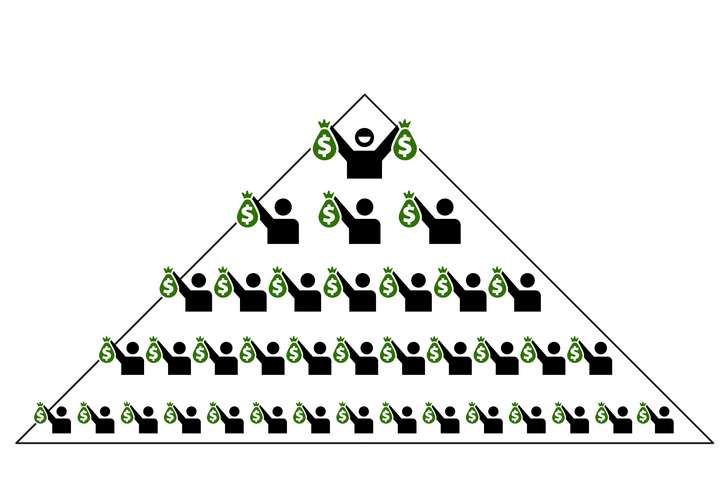In This Article
This article is presented by Steadily.
If you opened your insurance renewal notice lately and had to read the number twice, you’re not alone.
Landlord insurance premiums jumped nearly 8% in the first quarter of 2025 alone. You read that right; that’s not annual growth spread across 12 months; that’s just one quarter.
For real estate investors already navigating tight margins, rising mortgage rates, and competitive rental markets, insurance costs are becoming the silent profit killer. A property that penciled out beautifully two years ago might barely break even today, and insurance is a huge part of that equation.
Premium increases are hitting portfolios nationwide, from single-family rentals in the Midwest to multifamily properties on both coasts. Industry analysts are projecting continued upward pressure through at least 2026.
So what’s driving this surge? Why are premiums climbing faster than rents in most markets? And more importantly, what can you actually do about it without leaving your properties underinsured or exposing yourself to catastrophic risk?
We’re breaking down the real forces behind rising insurance costs, showing you exactly where premiums are spiking hardest, and giving you actionable strategies to protect your cash flow without compromising coverage.
The Numbers Don’t Lie: Premium Increases by Region
The insurance crisis isn’t hitting every market equally. Some regions are seeing modest bumps, while others are experiencing sticker shock that’s forcing investors to reconsider their entire portfolio strategy.
The hardest-hit markets
Florida leads the pack, with some landlords reporting premium increases of 30% to 50% year over year. In Miami-Dade and Broward counties, it’s not uncommon to see policies that cost $2,500 annually in 2022 now pushing $4,000 or more. Hurricane Ian’s $112 billion in damages was the catalyst for increased premiums, and they just seem to go up with every quarter.
Texas is close behind with premium increases. Between hailstorms, tornadoes, and Winter Storm Uri’s lingering impact on insurer confidence, landlords in Dallas, Houston, and Austin are facing 20% to 35% increases. Properties in hail-prone suburbs north of Dallas have seen some of the steepest jumps.
California’s story is wildfire-driven. Counties in and around wildfire zones (think Sonoma, Shasta, and Butte) are seeing 25% to 40% increases, and some insurers have stopped writing new policies in high-risk areas entirely. Coastal properties also face rising premiums due to erosion and flood concerns.
Colorado rounds out the top pain points. Hailstorms and the Marshall Fire in 2021 put the state on insurers’ radar. Denver-area landlords report 15% to 25% increases, with higher jumps in Boulder County.
The better (but not great) news
Midwest and Southeast markets outside Florida have seen more moderate increases in the 10% to 15% range. But “moderate” is relative when you’re managing thin margins, and these increases compound annually.
Even traditionally stable markets like the Pacific Northwest are starting to feel pressure as extreme weather events become more frequent nationwide. This raises the question: What’s actually driving these increases across the board?
The Five Forces Driving Insurance Costs Up
Understanding why premiums are rising helps you make smarter decisions about coverage, risk mitigation, and where to invest next. Here are the five major forces reshaping the landlord insurance landscape in 2025.
1. Climate change and extreme weather events
You might also like
Insurers are paying out record claims due to hurricanes, wildfires, floods, and severe storms. According to NOAA, the U.S. experienced 28 separate billion-dollar weather disasters in 2023 alone. That’s not just one bad year, but a trend of severe weather damage.
When insurers pay out more in claims, they raise premiums across entire regions to rebuild reserves. Even if your property has never filed a claim, you’re part of a risk pool that’s getting more expensive to insure.
2. Inflation in construction and repair costs
The rising premiums are not just a result of how often claims happen. They are a result of how much each claim costs to resolve. Lumber, labor, HVAC systems, roofing materials, you name it—it all costs significantly more than it did three years ago.
In 2020, replacing a roof might have cost $8,000. Today, that same job runs $12,000 or more. Insurers have to account for replacement cost increases when setting premiums, which means your policy gets more expensive, even if nothing about your property has changed.
3. Increased claims frequency
More tenants are filing claims. More slip-and-fall incidents are turning into lawsuits. Water damage from aging plumbing systems is on the rise as rental housing stock ages. The combination of older properties, higher tenant turnover, and more litigious tenants means insurers are writing more and more checks.
4. The reinsurance market is tightening
Most landlords don’t realize that insurance companies buy insurance too. It’s called reinsurance, and it protects carriers from catastrophic losses. When reinsurance costs go up (which they have, dramatically), those costs get passed down to you.
Global reinsurance rates have jumped 30% to 50% in some markets due to increased disaster payouts worldwide. Your landlord policy is indirectly subsidizing hurricane damage in the Caribbean and wildfires in Australia.
5. Litigation and settlement costs rising
Legal costs aren’t going down. When a tenant or visitor gets injured and sues, settlements and jury awards are larger than ever. Insurers are factoring higher legal defense costs and bigger payouts into their pricing models, especially in states with plaintiff-friendly laws.
What This Means for Your Cash Flow
These five forces represent structural changes in the insurance market that will likely persist for years. So, beyond just understanding the “why,” you need to know exactly how this impacts your bottom line.
When insurance premiums rise, these unexpected additional costs directly erode your net operating income, compress your margins, and can turn a performing asset into a break-even headache.
Let’s run the numbers on a typical scenario.
Example: Single-family rental in Texas
You own a rental property generating $2,000 per month in rent. Your annual insurance premium was $1,500 in 2022. After a 25% increase, you’re now paying $1,875. That’s an extra $375 per year, or about $31 per month.
Those numbers seem pretty reasonable, and definitely not bank-breaking. But if your net operating income was $800 per month ($9,600 annually), that $375 increase just ate nearly 4% of your annual NOI. Your cash-on-cash return dropped accordingly.
Now multiply that across a 10-property portfolio. Suddenly, you’re losing $3,750 per year in cash flow. That’s real money you could’ve reinvested, used for maintenance reserves, or simply kept as profit.
The compounding effect
These premium increases compound. If premiums rise 10% annually for the next three years, that $1,875 policy becomes $2,500. Your $31 monthly increase becomes $52. Over five years, you’ve paid thousands more in cumulative premiums, without changing anything on your property.
Additionally, if you’re financing properties, higher insurance costs affect your debt service coverage ratio, potentially limiting your ability to refinance or secure new loans.
You can’t afford to treat insurance as a set-it-and-forget-it line item anymore. It’s a variable expense that requires active management. Fortunately, there are proven strategies you can implement right now to control costs without sacrificing coverage.
Smart Strategies to Control Your Insurance Costs
You can’t control the national insurance market, but you can control how you respond to it. Here are proven tactics to keep your premiums in check without sacrificing critical coverage.
Invest in risk mitigation
Insurers reward landlords who actively reduce risk. Simple upgrades can translate into meaningful premium reductions. Consider installing impact-resistant roofing in hurricane zones, upgrading electrical panels in older homes, or adding monitored security systems. Many insurers offer 5% to 15% discounts for these improvements, and landlords can qualify for bonus depreciation tax breaks for making upgrades to their rental properties.
Water damage is one of the most common claims insurers process. Installing leak detection sensors, replacing old water heaters before they fail, and upgrading to PEX or copper plumbing can lower your risk profile and your premium.
Shop your policy regularly
Carriers compete aggressively for new business, and the best rate you got three years ago is almost certainly no longer competitive. Set a calendar reminder six weeks before renewal to get at least three quotes from different insurers.
When evaluating your new coverage, don’t just compare premiums. You should keep a close eye on coverage limits, deductibles, and exclusions. A cheaper policy that leaves you underinsured or exposed to gaps isn’t a good deal.
You can work with a company like Steadily that will shop for the best coverage for you.
Document everything
Insurers base premiums on perceived risk. If you’ve made upgrades, completed maintenance, or improved your property, document it with photos, receipts, and inspection reports. This documentation can help you negotiate better rates or justify lower premiums with underwriters.
Consider higher deductibles strategically
Raising your deductible from $1,000 to $2,500 can reduce your premium by 15% to 25%. If you have strong cash reserves and rarely file claims, this can be a smart move. Just make sure you can comfortably cover the higher out-of-pocket cost if disaster strikes.
Work with an investor-focused insurance partner
Most landlords make a critical mistake by assuming that all insurance is created equal. Generic homeowner’s insurers treat rental properties like an afterthought, applying residential models to commercial assets. Rental properties require more specific policies that cover secondary investment properties. If you continue to use a general homeowner’s insurance policy for your rental portfolio, you’ll likely pay more for coverage that doesn’t actually fit your needs.
Working with a provider (like Steadily) that specializes in landlord insurance from the ground up can help you find coverage that meets your specific investor needs.
Why Specialized Landlord Insurers Like Steadily Make a Difference
When you’re running a rental property business, you need an insurance partner that understands your world. Steadily was built specifically for real estate investors, and that focus makes all the difference.
Built for landlords, not homeowners
Steadily’s underwriting models, coverage options, and pricing structures account for the unique risks and needs of rental property owners. They’re not trying to shoehorn your investment properties into a homeowner’s policy template designed for someone living in their primary residence.
This specialization translates into competitive pricing, even as the broader market tightens. While traditional insurers are pulling back from high-risk markets or dramatically raising rates, Steadily leverages technology and data to price risk more accurately and efficiently.
Fast quotes, nationwide coverage
Need coverage in high-premium states like Florida, Texas, or California? Steadily operates nationwide and doesn’t balk at challenging markets. Their digital-first platform delivers quotes in minutes, which means you can compare options quickly and make informed decisions without waiting on brokers or underwriters.
If you’re managing multiple properties across different states, Steadily’s investor dashboard centralizes all your information. With one login, you can access all your policies, renewal dates, and coverage details.
Technology that works for you
Steadily’s platform is both fast and smart. You can upload inspection reports, renovation photos, or maintenance records directly into your account. This documentation helps justify better rates and ensures you’re not overpaying based on outdated property information.
In a market where premiums are climbing across the board, every percentage point matters. Steadily’s investor-focused approach means you’re not subsidizing homeowner claims or paying for coverage you don’t need. You’re getting landlord insurance built by people who understand exactly what you’re trying to accomplish.
Take Control of Your Insurance Costs Today
Rising premiums are here to stay, but that doesn’t mean you’re powerless. The smartest move you can make right now is to compare your current coverage against what specialized providers like Steadily can offer.
Get a fast, competitive quote from Steadily today, and see how much you could save while maintaining the coverage your portfolio needs.
Click here to get your free quote from Steadily and take the first step toward controlling your insurance costs in 2025.
























